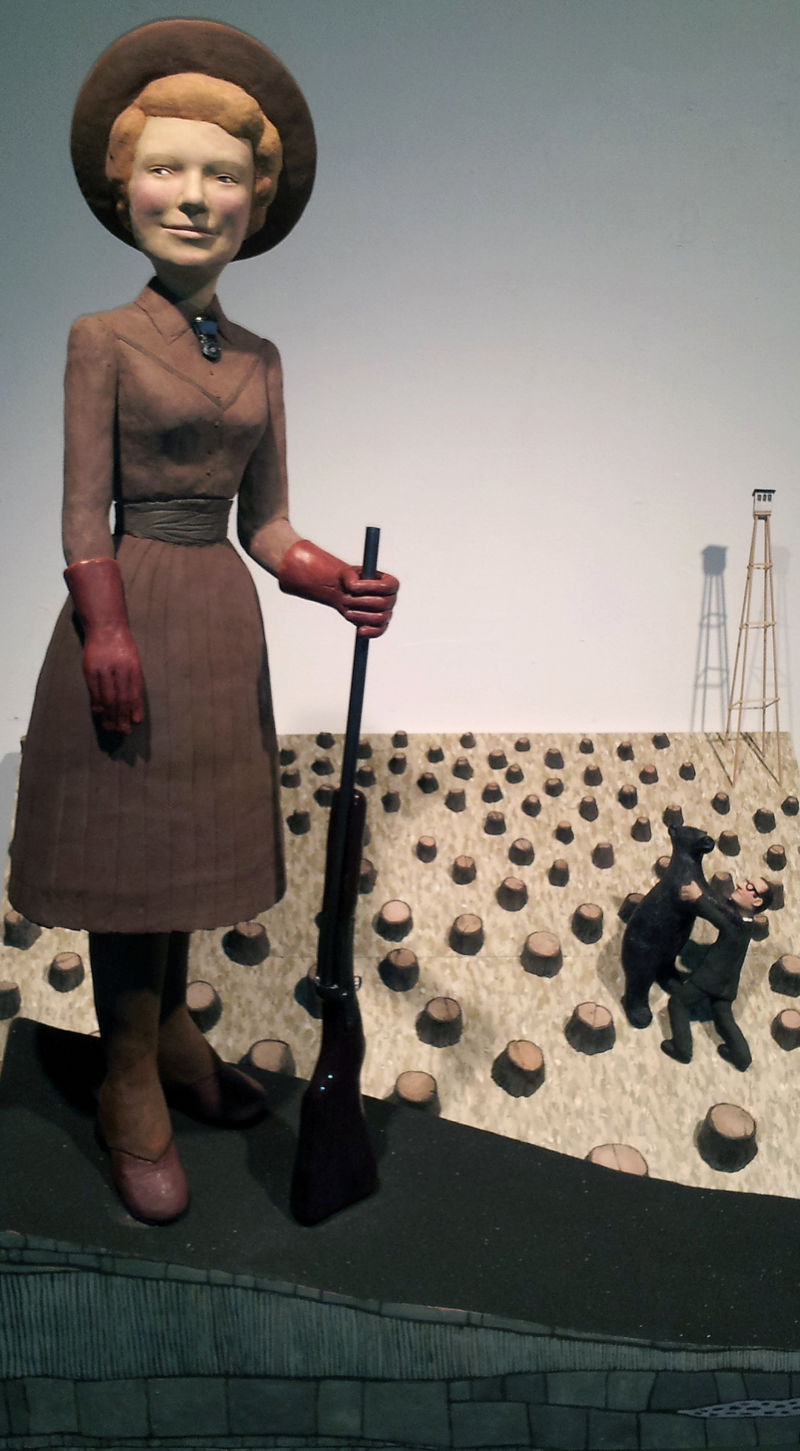Blog / 2017 / A Good Art Marketer Knows How to Listen
March 29, 2017
Sometimes I ask questions of the people in my social network. One day, I might be interested in who among my Twitter followers thinks they’re special and who thinks they’re not that different from other people. On another day, my focus might be less philosophical, while still inviting people to share about their values. For example, I might ask Facebook friends about smart phone etiquette. Is it reasonable to expect contacts to keep track of your time zone and to demand that they avoid emailing, texting, or direct messaging you after 10 o’clock your time? Or is it more practical to turn off noisy notifications yourself?
Whatever the subject of my queries, the goal of the exercise is to see the world as others see it. Of course, at the same time, I’m also marketing my art. My seemingly innocent questions are designed to foster thoughtful conversation and then associate that positive experience with my name and my visual work. It’s a subtle kind of promotion, but it works, because, like all the best marketing, it avoids telling fans what to think and asks them instead to participate in a conversation.
That ideal kind of marketing may be tricky to do every time you publish about your art, but the following tips can help make promotion a pleasure for you as well as for your audience:
Ask yourself: how do I enjoy talking about my work?
There are artists, like the French figurative painter Amylee, who love to blog, but it’s not for everyone, as evidenced by the many dead art blogs that litter the internet. Some creatives do better with shorter and less formal posts about their work directly on social media, a strategy that suits ceramicist Pattie Chalmers. Or maybe you’re happier speaking than you are writing, so vlogging is best for you, like it is for me.
Then again, maybe online chatter makes you cringe. In that case, keep it to a minimum by holding more in-person events, with or without your art. Invite specific people to your studio on a regular basis or arrange to see friends as well as business contacts often.
Turn marketing into another creative outlet.
One way to enjoy self-promotion is to make it into art. After all, like art, marketing is communication and self-expression. And, like art, promotion is most successful when it feels fresh or different. Figure out what makes your art special and you’re half way towards a marketing strategy that’s uniquely “you.”

For example, Amylee views her website and her blogging as one more medium for expression. Just as she has neither the desire nor the ability to create the same sort of painting for twenty years, she knows her marketing will morph as she matures. She’s always learning from other bloggers and researching new developments in web design, and these inquiries feed her pop-inspired paintings while also keeping her marketing up-to-date.
When I look back at my first vlogs, I’m struck by how rudimentary they are. These talking-head videos feel a bit too rehearsed (they were) and impossibly nervous (I was). Over the years, my vlogs have improved. Though I still use the talking-head approach, I now add footage that I take as I go about my life. While I’m still an amateur when it comes to making videos, my weekly practice helps me hone my skills for making moving images, and that ultimately influences my paintings too.
Show process images.
Take photos of not only your works-in-progress but also your tools, your materials, or things that inspire you. The goal in publishing these behind-the-scenes moments is to give more context to your art. Doing so makes the experience of your art richer for your audience, especially those who might not otherwise connect with your work.
For some artists, this sharing feels too intimate. They may fear copycats or they may prefer to make the finished art seem magical, as though it appeared in the world fully formed. Unfortunately, this unwillingness to share the process tends to be an obstacle in the path toward a sustainable marketing practice. When artists believe that only their completed work matters, they also tend to be more silent overall about their art. In the worst cases, they even manage to avoid all the realizations that come from listening to their audience.
Amylee knows the truth of this. She only began posting images from her studio when viewers asked her if she was painting over a printed photo. Since this is not technique that she uses, she felt it was important to show that she starts with a blank canvas and builds the image from there. Now that she’s been sharing her process shots for some time, she finds them to be an easy and effective form of marketing that subtly but certainly conveys her skill.

For her part, Chalmers doesn’t post behind-the-scenes images online, but she does give workshops where she teaches participants to make work that’s similar to hers. Remembering her first experience of one such class, she admits it was weird to see attendees making their versions of her art, using a process that had taken her years to figure out. At the same time, Chalmers acknowledges: “I didn’t get to where I am as an artist in a bubble.” She’s happy to share and keep creativity flowing.
Be aware of who you are and who you want to be.
Even if you don’t feel like you’re doing much marketing, you are. Being a person in the world who interacts with others is a kind of marketing in that you are communicating things about yourself to others. So why not be more proactive?
In Amylee’s case, the approach is deliberate. She wants to be a positive force, basing her blog on two guiding concepts: sharing and caring. For the most part, she scrupulously avoids publishing negative feelings on social media, but, recently, she commented about an inconsiderate habit that some Web users have when emailing a stranger for the first time. The response was immediate and uncomfortable, coming first as heated opinions and next as personal attacks. In the end, Amylee’s track record as a calm and uplifting presence on the Web rescued her, with longtime fans reminding her detractors of her many contributions. In other words, Amylee’s conscious choice to bring good feelings to the internet may make venting everyday frustrations tricky, but it also means that she can say her piece without damaging her reputation.
Chalmers is just as careful about the way she and her art are perceived. Once at an opening, she was interviewed on video. Since the event was noisy, she had to speak loudly, and, as she tells it, the resulting clip made her look like “a goof.” Though the experience wasn’t fun, it made her more aware of the importance of not only her own professional behavior but also the competencies of those with whom she’s working.
Establish good boundaries for sharing.
While you’re doing all this marketing, it’s possible that you might slip up and reveal something you wish you hadn’t. It’s painful, but it’s also part of how we learn where our public/private line is. It’s in a different place for each individual and its location shifts over the course of an artist’s career, but it’s important to know where yours is so that you can promote your art without making yourself too vulnerable.
Chalmers’ rule for avoiding the over-share is to remember that if it isn’t about her—if it’s about her family or friends—then it isn’t her story to tell. She also recognizes that sometimes intimate details can be too much for one audience but just right for another.
I’ve found that to be true. In fact, observing my reactions to other people’s sharing is how I gauge what I should divulge. For example, I feel like some of my social media friends share too personally. Donvt get me wrong: I find the minutia of their lives fascinating and I’m not saying they should share any less. Rather, my gut response to them helps me to see that I should refrain from publishing similar details from my life. Conversely, I have artist friends—people I know in real life—whose online presence reads like a clinical version of them. When I find myself wishing that they’d share more, I know that’s an indicator that I might want to talk publicly about those topics myself.
Remember that marketing is in the real world too.
Many of us do the bulk of our socializing online these days, but we shouldn’t underestimate the power of in-person interactions. If you find yourself exhausted by the internet and the stress of pursuing press, keep in mind that, at its core, marketing is just having a chat with friends.
Chalmers provides a great model. She used to send out applications to calls-for-entry a lot, but these days she doesn’t have to. She’s maintained relationships both online and off that bring in invitations to participate in shows, providing as many commitments as she can handle.
While I can’t claim Chalmers’ level of success at in-person marketing, since leaving Oregon, where I made my home for over twenty years, I have gotten a lot better at making new friends and at keeping old ones. I’ve come to understand that friendships require care and feeding. I no longer lock myself in my studio and allow the socializing to come to me whenever other people feel like reaching out. I schedule video calls with old friends and try to be conscious of tending to new relationships on a regular basis. The fruits of these efforts may not be immediately visible in my career, but every conversation about my work is an opportunity to learn about what my art means to other people. And that information improves both my art making and my art marketing.
In the end, most people may not think they’re all that different from everyone else, but they do like to be treated as if they are. If you believe your audience is special and you make them feel that way when you promote your art, you’ll do just fine.
PLEASE NOTE
This article was originally published in Professional Artist magazine, which I don’t write for anymore.
Peut-être que ce billet de blog te fait penser à quelque chose? Ou tu as une question à me poser? Je serais ravie de recevoir un petit bonjour de ta part!
Abonne-toi à ma liste de diffusion spéciale pour recevoir un email chaque fois que je publie un nouvel article.
Si tu as apprécié ce billet de blog, Ko-fi te permet de faire un don. Chaque dollar vaut un milliard pour moi!



